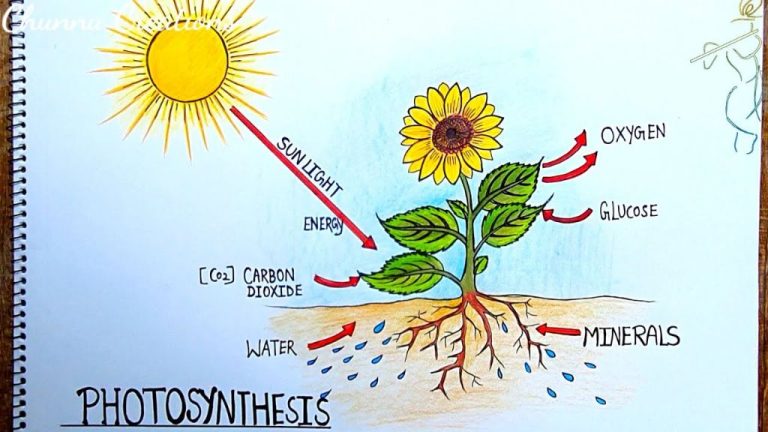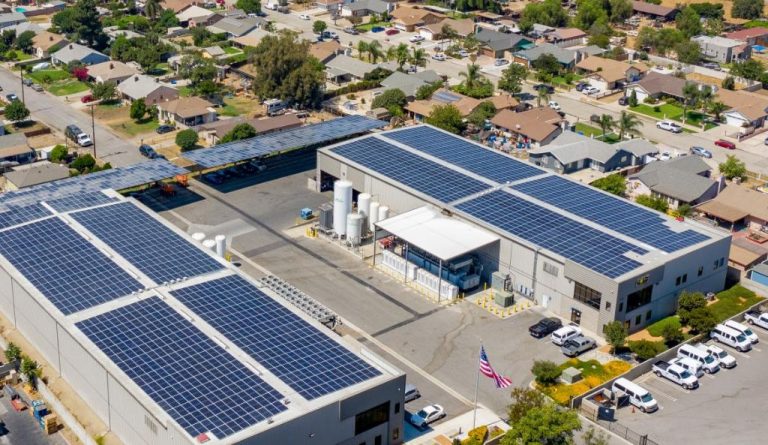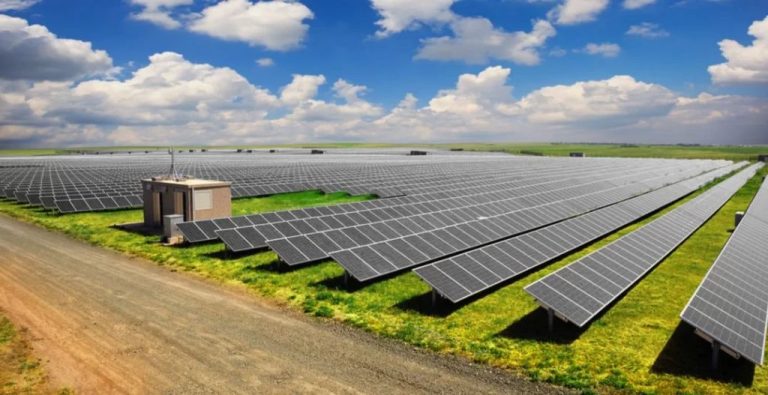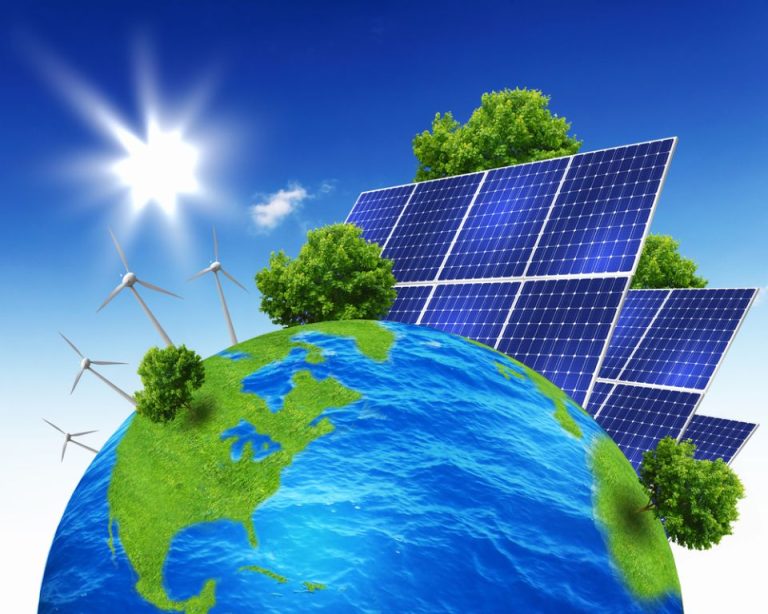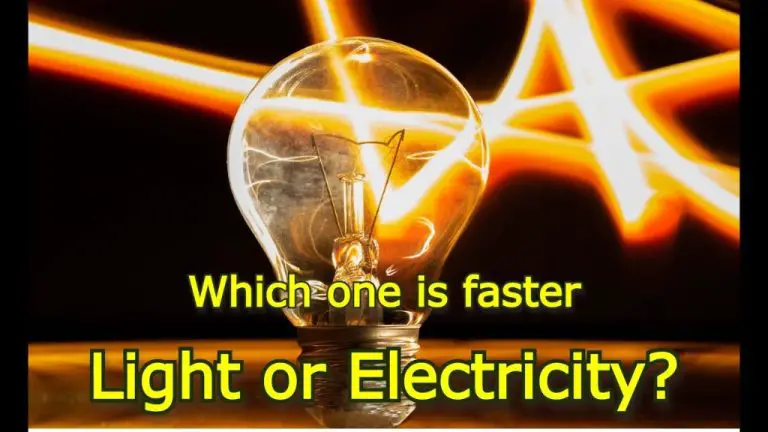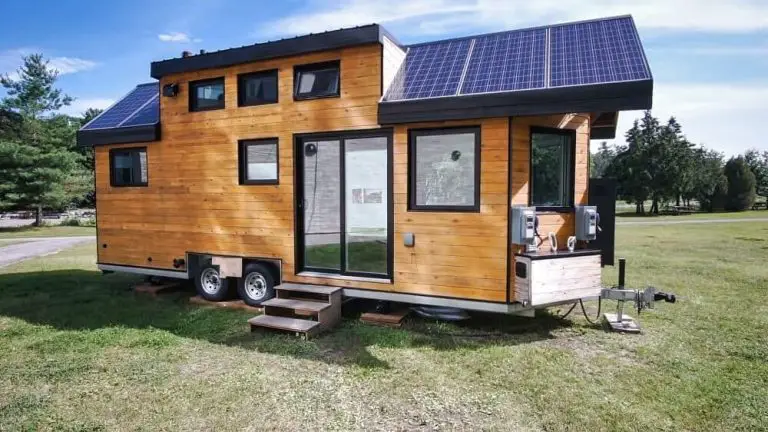What Are The 5 Examples Of Energy Conversion?
Energy conversion refers to the process of changing energy from one form to another. There are many examples of energy conversion that occur around us every day. This article will examine 5 key examples of converting energy from one form into another:
Mechanical Energy to Electrical Energy
One of the most common ways mechanical energy gets converted into electrical energy is through generators. Generators work by using rotational motion to generate electricity. For example, in a hydroelectric dam, the mechanical energy from the flowing water causes the dam’s turbines to spin. These spinning turbines are connected to generators which have wire coils rotating around magnets inside them. When the coils rotate around the magnets, it creates an electric current – converting the mechanical energy of the spinning into electrical energy. This generated electricity can then be used to power homes, businesses, and cities.
Similar generator principles are used in wind turbines. Instead of water flow, the blades of the wind turbine spin from the mechanical energy of the wind. This rotational kinetic energy gets converted into electricity by generators as the turbine blades spin. Anywhere rotational kinetic energy can be harnessed, generators can convert this mechanical energy into usable electrical current.
Chemical Energy to Electrical Energy
Batteries are a common example of converting chemical energy into electrical energy. Within a battery, there are two different electrodes – the anode and cathode, which are made of different chemicals. These electrodes are placed in an electrolyte solution and connected by a wire.
The chemical reactions within the battery drive electrons from the anode to the cathode through the wire, generating an electrical current. Specifically, at the anode, the metal is oxidized as it loses electrons. These electrons then flow through the wire to the cathode. At the cathode, the electrons are accepted by a reduction reaction, combining with the metal ions and electrolyte.
As the redox reactions occur, the chemical energy stored in the electrodes is converted into the movement of electrons, creating usable electrical energy. Over time, the electrode materials get used up and the battery dies out. But the basic electrochemical conversion continues to take place as long as there are reactants present.
The amount of electrical energy produced depends on the specific chemicals used in the battery. For example, lithium ion batteries provide high energy density through the reaction of lithium with carbon at the anode and a lithiated metal oxide at the cathode. The chemical to electrical conversion occurs spontaneously, allowing lithium ion batteries to generate and store significant electrical power.
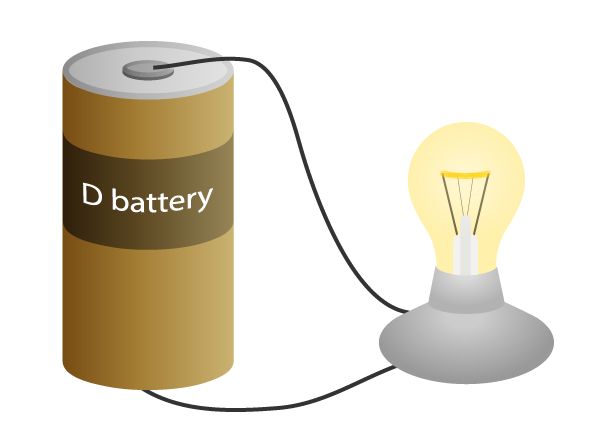
Radiant Energy to Electrical Energy
Solar cells, also called photovoltaic cells, are able to convert light energy from the sun directly into electrical energy. This conversion takes place through the photovoltaic effect. When photons from sunlight strike the surface of a solar cell, they transfer their energy to the electrons in the atoms of the solar cell’s semiconductor material. This energizes the electrons enough to break free from their atomic bonds and flow through the semiconductor material as electricity. The solar cell has a built-in electric field that forces the electrons in one direction, creating a DC current. This DC current electricity can then be used to power electrical devices, or inverted into AC electricity to tie into the grid.
Solar cells are often made of silicon with trace amounts of boron and phosphorus added in a process called doping. The added chemicals alter the electrical properties of the silicon to make it conductive. When sunlight strikes the solar cell, the energized electrons move into the boron layer while the “holes” they leave behind move into the phosphorus layer. This movement of electrons and holes creates the electric current. The more intense the sunlight striking the solar cell, the more electricity that can be produced.
Solar panels are made up of many individual solar cells connected together. They can range from small panels that charge calculators and watches, to large utility-scale solar farms that produce electricity for hundreds or thousands of homes and businesses. Converting sunlight into usable electricity using solar cells is an important example of converting radiant energy into electrical energy.
Nuclear Energy to Electrical Energy
Nuclear power plants convert nuclear energy from nuclear fission reactions into electrical energy. In nuclear fission, atoms of nuclear fuel such as uranium or plutonium are split into smaller atoms, releasing a tremendous amount of energy in the form of heat. This heat is used to boil water into steam that spins a turbine connected to a generator to produce electricity.
Specifically, enriched uranium fuel rods are placed inside a nuclear reactor core. The uranium atoms split when bombarded by neutrons, releasing more neutrons that cause further splitting in a chain reaction. The reactor core contains control rods that absorb excess neutrons to regulate the reaction. The enormous amount of heat released from splitting atoms boils water flowing around the fuel rods into steam.
This high-pressure steam is piped from the nuclear reactor into a turbine. As the steam rushes past the turbine blades, it causes the turbine shaft to rotate at high speeds. The turbine shaft is connected to the rotor of an electrical generator. As the shaft spins, it rotates the generator rotor, producing a rotating magnetic field within the generator stator. This then induces electricity in the stator coils, generating electrical power that is then distributed through transformers and transmission lines to homes and businesses.
In summary, nuclear power plants use the tremendous heat released from nuclear fission reactions in a contained reactor core to generate steam and spin a turbine generator to efficiently convert nuclear energy into reliable electrical power.
Chemical Energy to Mechanical Energy
One of the most common examples of energy conversion is the process of transforming the chemical energy stored in fuels like gasoline, diesel, or natural gas into mechanical energy to power engines and machines.
This occurs through combustion – the fuel is burned with oxygen to release the chemical energy stored within its molecular bonds. This rapid exothermic reaction generates heat energy. In an engine, like in a car or generator, this heat energy rapidly expands gases to drive the motion of mechanical components like pistons or turbines.
For example, in a gasoline car engine, a spark plug ignites a compressed gas vapor mixture of gasoline and air inside each cylinder. This causes combustion, rapidly heating the gases and creating pressure that pushes the piston down. The linear motion of the piston turns a crankshaft, which ultimately powers the wheels of the vehicle through a drive shaft and gears in the transmission.
Similar principles allow combustion engines in machines like generators, compressors, chainsaws, lawnmowers and more to convert the chemical energy in fuels like propane, diesel or kerosene into useful rotational mechanical energy output via crankshafts, turbines and driveshafts.
Electrical Energy to Light Energy
Light bulbs provide a common example of converting electrical energy into visible light energy. Inside a light bulb is a thin wire filament made of tungsten metal. When electricity flows through the filament, the resistance of the filament causes it to heat up to very high temperatures.
As the filament gets hotter, it starts to glow and give off visible light. This effect is known as incandescence, where a material emits light as a result of being heated. The hotter the filament gets, the brighter the light it emits. So the electrical energy flowing through the light bulb is converted into intense heat energy in the filament, and then into visible light energy.
Different types of light bulbs rely on this basic principle to convert electricity into light, although the specific methods and materials may vary. For example, LED light bulbs use semiconductor materials that emit light when electricity flows through them. But in all cases, light bulbs take advantage of converting one form of energy (electrical) into another form (light).
Chemical Energy to Light Energy
One example of how chemical energy can be converted into light energy is through a process called chemiluminescence. Chemiluminescence is the emission of light as the result of a chemical reaction. Some chemical reactions release energy in the form of light rather than heat.
A common example of chemiluminescence is the glow stick. Glow sticks contain two chemical solutions in separate compartments. When you bend or crack the glow stick, the two solutions mix and the resulting chemical reaction produces light. The chemicals in the glow stick solution are called fluorophores. They give off light through the chemiluminescence process.
Another example of chemiluminescence is bioluminescence or the natural light produced by some living organisms. Fireflies and glowworms produce light through a chemiluminescent reaction. The firefly enzyme called luciferase catalyzes a reaction between luciferin, ATP, and oxygen that generates light. The different colors of light depend on the structure of the luciferin.
Chemiluminescence is also used in emergency lighting, theatrical and novelty items, and even medical diagnostics. For example, medical tests like luminol can detect trace amounts of blood at crime scenes through glowing chemiluminescence. Overall, chemiluminescence provides a great example of how chemical energy can be converted into glowing light energy through chemical reactions.
Electrical Energy to Sound Energy
Speakers are a common example of a device that converts electrical energy into sound energy. Speakers contain electromagnets that are powered by an amplifier receiving electrical signals. As the amplifier sends varying electrical signals, the electromagnets in the speaker expand and contract.
Attached to the electromagnets is a lightweight and flexible cone made of paper, plastic or metal. As the electromagnets change polarity and strength based on the electrical signal, they push and pull on the cone causing it to vibrate back and forth rapidly. This vibration creates compression waves in the air, which travel to our ears and are perceived as audible sound.
The electrical signals sent to the speaker determine the pattern of vibration and compression waves. By varying the electrical signal, different sound frequencies can be produced by the speaker. This allows the speaker to reproduce sounds like music, speech and other audio when paired with a device that encodes audio information into an electrical signal. Through this energy conversion process, the speaker transforms the energy of electricity into acoustic energy we hear.
Conclusion
As we have seen, energy can be converted from one form to another in many different ways. The five main examples discussed were:
1. Mechanical energy can be converted into electrical energy, such as in power plants where the kinetic energy of flowing water spins turbines connected to generators.
2. Chemical energy stored in fuel sources like coal, oil, and natural gas can be converted into electrical energy through combustion and heating water to spin turbines.
3. Radiant energy from the sun can be converted directly into electrical energy using solar cells in photovoltaic panels.
4. Nuclear energy released from the splitting of uranium atoms can heat water and produce steam to spin generators.
5. The chemical energy stored in food and fuel can be converted into mechanical energy through digestion and combustion in vehicle engines.
The key takeaway is that energy is never created or destroyed, just converted from one form into another. This conversion between different energy types is essential for powering our modern world.

